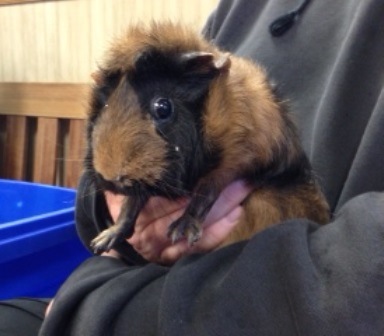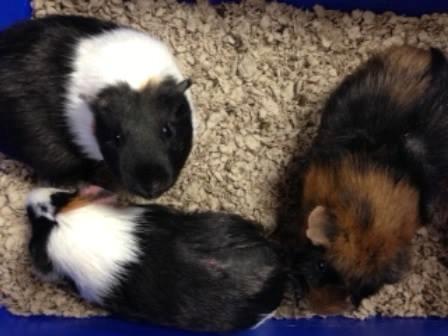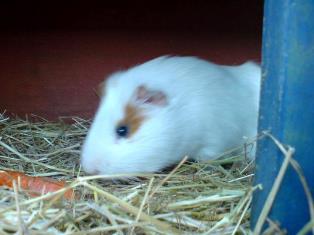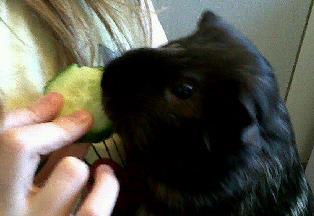Thinking about adding a Guinea pig (or two) as a member of your family? Guinea pigs make great pets. However, a basic understanding about their care and feeding requirements will go a long way in managing your pet’s health and well-being for years to come.
Following are some things you need to know:
The guinea pig is a member of the rodent family; they are not “pigs” at all. This means they can multiple rapidly, and their one set of teeth continually grow. They are originally from the Andes Mountains of South America. From there they migrated to England and then to America. There are three major breeds.
Guinea pigs are also called “cavies.” They are social, lively and gentle creatures. They make great pets, especially if handled frequently at a young age.
Cavies can live alone or in small groups of just females or just males. Two females will become great friends. Two males from the same litter as babies may do well together. But two males from different litters will fight. If you put a male with two females, they are going to breed.
Just remember, more than one cavy means more to clean. Cavies are messy. They produce a lot of feces, and they defecate in their food and water bowls. They will move their food and water bowls all over the place. The more cavies you have, the larger the cage you need and the more litter you need, and that costs money. Please make sure you can afford the time and energy it will take to care for more than one guinea pig at a time.
The lifespan of a guinea pig is 4-8 years with an average of 5-6 years in the home. They are generally hardy pets if they have responsible owners who take good daily care of their pets. This includes properly observing the handling, feeding and cleaning up after their pets. Cleanliness is the most important thing. That is what we call husbandry. Husbandry is of the utmost importance.
They do not tolerate sudden dietary or environmental changes. Their food preferences are established early in life. So if you get an older guinea pig, it’s probably not a good idea to give them lots of variety in food and surroundings.
Guinea pigs do not jump or climb. However, we still recommend the tubs with covers as shelter, especially if you own other pets like cats. A tub and wire cover protects them.
Cavies should be kept in a quiet area out of direct sunlight. The recommended room temperature is 65-79 degrees. They do better in cooler temperatures rather than in too much heat and humidity. They can get heat stroke at temperatures over 85 degrees.
Diet is very important. They require hay, pellets and a piece of vegetables and fruit daily as well as something to gnaw on. Cavies are one of the few species in the world that cannot produce their own Vitamin C. Therefore, supplementing Vitamin C in their food daily is critical.
Timothy grass hay is an important source of fiber. Make sure they always have hay in their cage to nibble on. Avoid alfalfa hay which is too high in calories and calcium which can lead to obesity and other problems. Buy commercial guinea pig pellets that are 16% fiber and 20 percent protein. A handful of about 1/8 of a cup should be fed twice daily, once in the morning and evening.
Guinea Pigs have sensitive intestinal tracts, so avoid sudden alterations in diet and food brand changes. Make changes and additions slowly and in small amounts, especially when they are young. Limit treats and offer small amount of 1-2 Tbsp a day of fresh fruits and vegetables
It’s a great idea to expose young guinea pigs to small amounts of different types of guinea pig pellets, vegetables and fruits. This will help get them used to variety. Guinea pigs will enjoy a variety of leafy greens offered in handfuls.
Some foods that contain high levels of vitamin C to choose from are lettuce, cabbage, kale, cucumbers, parsley, spinach, carrot tops, dandelion greens, red and green peppers (sweet and hot), broccoli, peas, corn and tomatoes.
You can also feed oranges, apples, strawberries, pears, grapes, cantaloupe and watermelon. The key here is to pick only one type of vegetable and one type of fruit daily. Do not try to feed several varieties all in one day. Introduce new foods slowly and over time.
You should have hay available at all times. Remember, a handful of pellets twice a day. Also, a handful of veggies and a slice of fresh fruit or a quarter of an orange per guinea pig per day is a great source of Vitamin C. All fresh foods need to be washed and removed from their feeding area/cage after a few hours if not eaten.
Fresh, clean water in an inverted bottle with a sipper / drinking tube needs to be available at all times. The water should be changed daily, and the sipper tube cleaned with a pipe cleaner because cavies will likely clog it up with food. Also remember to clean feeding bowls daily as cavies tend to sit in them.
Visit our Learning Center to source more information about Guinea Pigs as pets. Also feel free to call our office with questions and to schedule a wellness exam for your new furry friend.
Joe Martins, DVM, Belle Mead Animal Hospital







